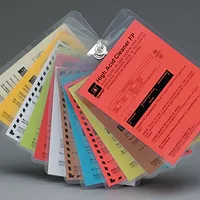Top 10 Tips for Meeting Standards of ISO 19011

ISO 19011 guidance can differ greatly based on company size, maturity of the organization’s management system and complexity of the organization to be audited.
It is imperative that each person or group implementing and managing their auditing system must follow fundamental principles of auditing including—integrity, fair presentation, due professional care, confidentiality, independence or impartiality, and an evidence-based approach.
Here are the top 10 items to consider regarding your audit program:
1. Approach program objectives based on risk
Priority should be given to matters of greater significance within the management system—weigh the risks.
2. Select the audit team
Based on the complexity of the programs to be audited, audit teams need to be developed and controlled by a lead auditor. Take care to provide adequate training to other team members.
3. Manage the audit program
Based on the objectives, an audit schedule can be used to manage the audit program that includes the audit checklist, audit reports and corrective actions to findings identified.
4. Continually monitor activities
Use feedback from the auditee or audit team members, then frequencies and/or the auditing approach can be modified. Be sure to also monitor auditor performance.
5. Review and improve
This may include adjusting auditing frequencies as a result of recurring findings, changes in suppliers, or change in audit team members.
6. Establish contact with auditee
Request documents to be reviewed and/or alert personnel who must be available during the audit.
7. Prepare audit plan
Outline how much time will be spent on process verification and document review.
8. Document review
Adequate review and collection of objective evidence is key. Documented procedures must be supported with adequate records.
9. Communicate during the audit
Audit findings should be communicated during the audit process and not saved for the exit meeting.
10. Evaluate competence
All auditors must comply with above steps, this includes demonstration of competency in the areas of ISO 19011.
Jeff Chilton currently serves as vice president of professional services at Alchemy Systems. For over 18 years, Chilton has consulted with hundreds of food manufacturing firms to develop and enhance their food safety and quality programs.
Looking for quick answers on food safety topics?
Try Ask FSM, our new smart AI search tool.
Ask FSM →








